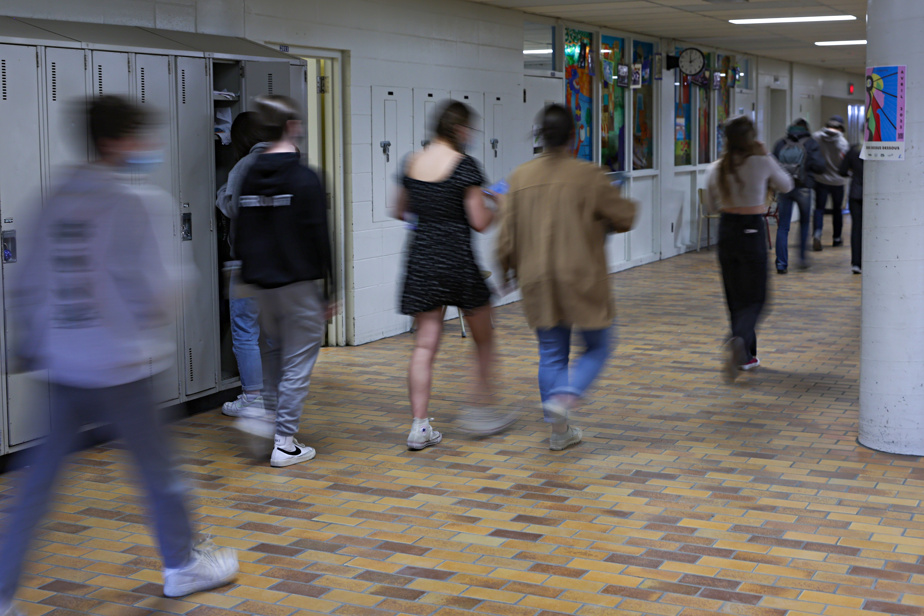Parents and teachers are demanding them, the Legault government sees them in its soup. Now, in turn, the president of the Centrale des syndicats du Québec (CSQ) is changing his views on specific high school programs (in dance, music, soccer, etc.), deeming it “reductive” to talk about them. still as a “third gear” and considers the issue as a priority which will be at the heart of its June congress.
What there is to know
To compete with private schools, the public network has been offering sports, artistic, cultural and scientific concentrations for several years.
These programs, often offered only to students with good grades, have often been criticized and described as “third gear”.
The largest education union is now much more open to this.
In interview with The PressÉric Gingras admits that there is a “change in the union posture”.

PHOTO ALAIN ROBERGE, LA PRESSE ARCHIVES
Éric Gingras, president of the Centrale des syndicats du Québec
Thirty years ago, he says, his union would have said of specific programs “that we need to completely cut them.” “But there, the teachers and the staff recognize that it is interesting” and that the students find it a source of inspiration.
As Mr. Gingras explains, these specific high school programs were set up to compete with private schools, which base a good part of their marketing on these concentrations.
In many places, these particular programs have boosted the image of public schools, with laudatory reports extolling their merits.
Their perverse effect remains, however. As many of them select students on the basis of grades, regular programs are often emptied of their best students and those who are still there feel stigmatized.
When they are registered in the regular sector, notes Mr. Gingras, young people say when they are questioned: “I am not in anything. »
The private sector in good health
Audrée Gilbert Couture, whose daughter Marion (in 5e year) thinks thoroughly about his choice of secondary school, summarizes it well. “Nowadays, sending our children to regular care is almost considered neglecting them. »

PHOTO ALAIN ROBERGE, THE PRESS
Audrée Gilbert Couture and her daughter Marion, 5th grade studente year
What is she herself looking for so much in a particular high school program? “Discipline, supervision,” she replies.
Keeping your daughter occupied as much as possible is a “safety net” for her against loitering or bad company.
In this family, it’s serious: her daughter will visit a total of seven or eight schools and she will be enrolled in several of them at the same time. Mme Gilbert Couture created an Excel file recording the different facets of the private or public schools envisaged. “I plan to spend $1,000 on registration fees,” she says.
The public, for this family as for so many others, remains in the equation, because of their particular agendas. Are private schools afraid of losing their competitive advantage?
David Bowles, president of the Federation of Private Educational Establishments of Quebec, assures us that no. “Ten years ago, we had more difficulty filling our groups, but that is no longer the case. »
At Collège Charles-Lemoyne, which he also directs, he says he has a waiting list of 200 students.
Mr. Bowles himself highlights the appeal of special programs, with school hockey being particularly sought after, with parents finding that it greatly reduces family time.
Hockey Quebec figures confirm this enthusiasm. In 2018-2019, 4,207 were registered in school hockey. In 2022-2023, this figure jumped to 7,640 young people.
For Éric Gingras, of the CSQ, the fact remains that we must avoid “wall-to-wall”, wrongly thinking that specific programs are the solution to everything. Above all, these must be accessible to all, without regard to students’ grades or parents’ ability to pay.
And “what is offered must not only be sports programs,” he says.
Focus on extracurriculars
Suzanne-G. Chartrand, retired professor from Laval University and founder of the Debout pour l’école! movement, thinks the same and adds that concentrations – a term she prefers – must be “quality”. “It doesn’t have to be nonsense. »
It would also be very regrettable, in his opinion, if all other possibilities were eliminated. She particularly advocates for more extracurricular activities, an option too often neglected, according to her. High school students often leave school shortly after 3 p.m., “and then they are on their tablet,” she laments.
Activities at school, but outside of timetables, would also have the advantage, she concludes, “of not taking away hours from regular teaching”, as is the case when schools offer concentrations.
Learn more
-
- 75%
- Participation rate of public secondary students (2026-2027 target) in a specific program
Source: 2023-2027 Strategic Plan of the Ministry of Education
